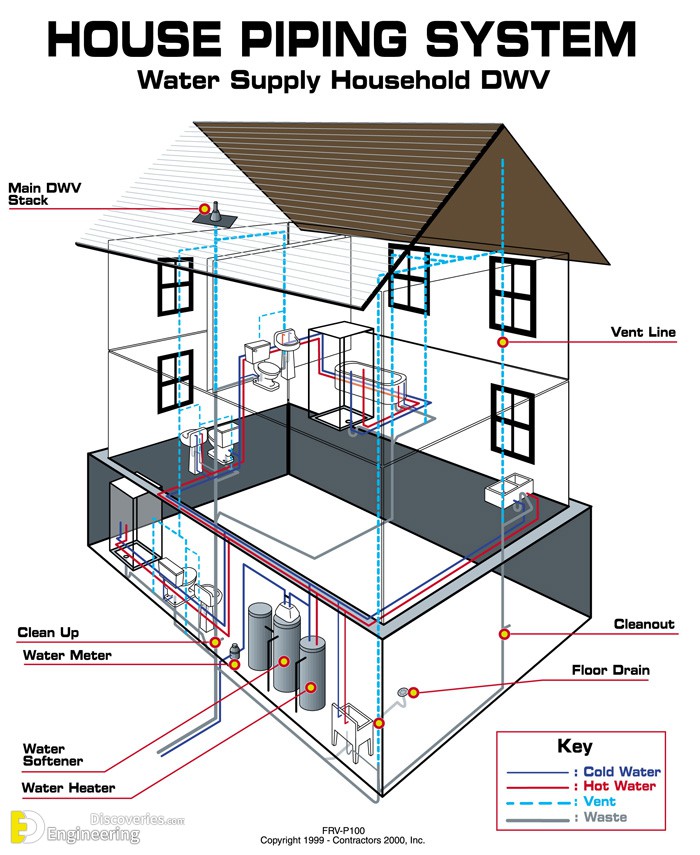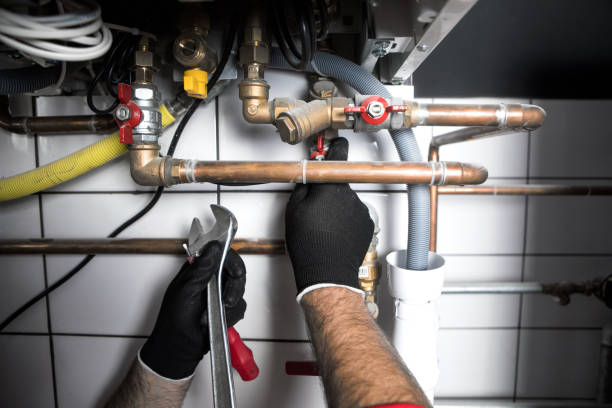The author is making a number of good observations relating to Understanding Your Home's Plumbing Anatomy as a whole in this article beneath.

Understanding exactly how your home's pipes system works is vital for each house owner. From providing clean water for drinking, cooking, and bathing to safely removing wastewater, a properly maintained pipes system is critical for your family members's wellness and convenience. In this detailed guide, we'll explore the intricate network that makes up your home's pipes and deal ideas on maintenance, upgrades, and dealing with common issues.
Intro
Your home's pipes system is more than just a network of pipelines; it's a complex system that ensures you have accessibility to tidy water and effective wastewater elimination. Recognizing its elements and how they work together can aid you protect against expensive repair work and ensure every little thing runs efficiently.
Fundamental Components of a Pipes System
Pipelines and Tubing
At the heart of your pipes system are the pipelines and tubing that bring water throughout your home. These can be made of numerous materials such as copper, PVC, or PEX, each with its benefits in terms of longevity and cost-effectiveness.
Fixtures: Sinks, Toilets, Showers, and so on.
Fixtures like sinks, toilets, showers, and bath tubs are where water is utilized in your home. Recognizing exactly how these fixtures attach to the plumbing system helps in identifying troubles and planning upgrades.
Shutoffs and Shut-off Points
Valves manage the circulation of water in your plumbing system. Shut-off shutoffs are essential throughout emergency situations or when you need to make repair work, permitting you to separate parts of the system without disrupting water circulation to the entire residence.
Supply Of Water System
Key Water Line
The main water line connects your home to the metropolitan supply of water or a private well. It's where water enters your home and is dispersed to various fixtures.
Water Meter and Stress Regulator
The water meter procedures your water usage, while a pressure regulatory authority guarantees that water moves at a risk-free pressure throughout your home's pipes system, stopping damage to pipes and components.
Cold Water vs. Hot Water Lines
Recognizing the distinction in between cold water lines, which provide water directly from the major, and hot water lines, which bring warmed water from the water heater, aids in troubleshooting and preparing for upgrades.
Water drainage System
Drain Water Lines and Traps
Drain pipes bring wastewater far from sinks, showers, and toilets to the drain or septic system. Traps stop sewage system gases from entering your home and also catch particles that could trigger obstructions.
Ventilation Pipes
Air flow pipelines permit air into the drain system, protecting against suction that could slow down water drainage and create traps to empty. Correct air flow is important for preserving the honesty of your plumbing system.
Significance of Proper Drain
Making certain correct water drainage prevents backups and water damages. Consistently cleansing drains pipes and maintaining traps can stop pricey fixings and expand the life of your plumbing system.
Water Heating System
Kinds Of Water Heaters
Hot water heater can be tankless or typical tank-style. Tankless heating systems heat water on demand, while tanks keep heated water for instant usage.
Updating Your Pipes System
Factors for Updating
Updating to water-efficient components or changing old pipelines can improve water quality, reduce water bills, and enhance the value of your home.
Modern Plumbing Technologies and Their Benefits
Check out innovations like wise leak detectors, water-saving bathrooms, and energy-efficient hot water heater that can save money and decrease environmental effect.
Expense Considerations and ROI
Determine the in advance expenses versus long-term savings when considering plumbing upgrades. Many upgrades pay for themselves through reduced energy costs and fewer repair work.
How Water Heaters Connect to the Pipes System
Comprehending exactly how water heaters connect to both the cold water supply and hot water circulation lines aids in identifying problems like inadequate hot water or leaks.
Upkeep Tips for Water Heaters
On a regular basis purging your water heater to remove sediment, examining the temperature level setups, and examining for leakages can expand its life expectancy and improve energy performance.
Typical Plumbing Issues
Leakages and Their Causes
Leaks can occur due to maturing pipelines, loose fittings, or high water stress. Attending to leaks without delay protects against water damage and mold and mildew development.
Blockages and Blockages
Clogs in drains pipes and bathrooms are frequently brought on by purging non-flushable products or a build-up of grease and hair. Utilizing drain displays and being mindful of what drops your drains pipes can protect against blockages.
Indications of Plumbing Troubles to Expect
Low water stress, sluggish drains pipes, foul odors, or uncommonly high water bills are indications of potential pipes troubles that ought to be resolved immediately.
Plumbing Upkeep Tips
Regular Examinations and Checks
Arrange yearly plumbing inspections to capture problems early. Seek indications of leakages, corrosion, or mineral build-up in faucets and showerheads.
Do It Yourself Upkeep Tasks
Easy jobs like cleaning tap aerators, checking for commode leakages using color tablets, or insulating subjected pipes in chilly environments can avoid significant plumbing concerns.
When to Call a Professional Plumbing Professional
Know when a pipes problem calls for professional know-how. Attempting complicated fixings without appropriate expertise can lead to more damages and higher repair work prices.
Tips for Reducing Water Usage
Straightforward habits like taking care of leakages promptly, taking shorter showers, and running full lots of washing and dishes can save water and reduced your utility bills.
Eco-Friendly Pipes Options
Take into consideration sustainable plumbing materials like bamboo for floor covering, which is durable and eco-friendly, or recycled glass for counter tops.
Emergency situation Readiness
Actions to Take Throughout a Pipes Emergency
Know where your shut-off valves are located and exactly how to switch off the water supply in case of a burst pipe or significant leakage.
Relevance of Having Emergency Contacts Useful
Maintain call details for local plumbing technicians or emergency situation services readily available for quick action throughout a pipes situation.
Ecological Influence and Preservation
Water-Saving Fixtures and Appliances
Installing low-flow faucets, showerheads, and toilets can considerably minimize water use without compromising efficiency.
DIY Emergency Fixes (When Applicable).
Temporary repairs like using duct tape to patch a leaking pipe or placing a bucket under a leaking faucet can reduce damage until a professional plumbing arrives.
Verdict.
Understanding the anatomy of your home's pipes system equips you to maintain it effectively, conserving time and money on fixings. By adhering to routine maintenance routines and staying informed concerning contemporary plumbing technologies, you can guarantee your pipes system runs efficiently for years ahead.
The Anatomy of Your Home s Plumbing System
Understanding the anatomy of your home s plumbing system is essential for any homeowner. It not only helps in identifying potential issues but also facilitates effective communication with professionals when repairs or upgrades are needed. Your home s plumbing system is more than just pipes and faucets; it s a complex network that ensures the efficient and hygienic flow of water in and out of your house. In this blog, we ll dissect the crucial components of your home s plumbing system. For those in Antelope Valley, Brock Plumbing is your trusted partner for all your plumbing needs, ensuring your system functions smoothly and efficiently.
Water Supply System
Main Water Line: This is where your home s plumbing system begins. The main water line connects your home to the public water supply or a private well. Pipes and Shut-off Valves: Pipes distribute water throughout your home. Shut-off valves are crucial for controlling the flow of water and making repairs without shutting off the entire system. Drainage System
Drain Pipes: These pipes carry waste and water away from sinks, toilets, and showers. Vents: Vents allow sewer gases to escape and help maintain proper pressure in the drainage pipes, ensuring efficient flow of wastewater. Traps: Every fixture has a trap, a U-shaped pipe that holds water and prevents sewer gases from entering your home. The most common is the P-trap under sinks. Fixtures and Appliances
Fixtures and appliances are the most interacted with parts of your plumbing system. They include sinks, toilets, showers, dishwashers, and washing machines. Each fixture and appliance has its own supply and drainage connection, ensuring they receive clean water and can dispose of wastewater effectively.
Water Heating System
Your water heater is a crucial component, providing hot water to various fixtures and appliances in your home. It can be tank-based or tankless, with each type having its own set of advantages and maintenance requirements. Regular maintenance is essential to ensure efficient operation and extend the lifespan of the unit.
Sump Pump
In areas prone to flooding or with high water tables, a sump pump is an essential part of the plumbing system. It s installed in the lowest part of your basement or crawlspace and pumps out water that accumulates, preventing flooding and protecting your home from water damage.
Septic System
Homes that are not connected to a municipal sewer system have a septic system and an underground wastewater treatment structure. Understanding how to maintain your septic system is crucial to prevent backups, odors, and early system failure.
Conclusion
Your home s plumbing system is a complex and essential network, ensuring the efficient and hygienic flow of water in and out of your property. Understanding its key components helps in maintaining it properly and identifying issues before they escalate into major problems. For residents in Antelope Valley, Brock Plumbing is dedicated to providing top-notch services, ensuring that every part of your plumbing system is in perfect working order. Trust our team of professionals to handle all your plumbing needs, ensuring your home remains comfortable, safe, and well-maintained.
https://brockplumbinganddrains.com/blog/the-anatomy-of-your-homes-plumbing-system/

Do you like reading up on Anatomy of a House: Understanding the Components? Write a short review further down. We'd be pleased to see your responses about this entry. Hoping that you come back again soon. If you enjoyed our blog entry kindly do not forget to share it. Thank you for being here. Return soon.
View More